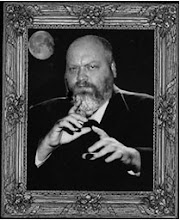Modern Paganism Thoughts continued...
All religions change and evolve over time.
Christianity is a good example of this. By the end of the first century, it had borrowed heavily from Zoroastrianism in terms of the idea of a duality and a battle between light and darkness (Mitra vs Ahriman).
By the fourth century, many popular pagan gods (Thor, Brigid, Cernunnos) had been adopted as Christian Saints (St. Christopher, St. Brigid, St. Korneli). The fundamentalist Protestant version of Christianity practiced so devoutly by "literalists"today has almost nothing to do with the teachings ofJesus (originally Jeshua Ben Josef) and has a lot more to do with the teachings of Paul of Tarses and St. Augustine. Much of what such Christians believe is not even inthe Bible -the varoius mythology that contains their beliefs comes from the Book of Enoch, which was never included in the Scriptures. The King James Bible itself was rewritten to make sure that the bible conformed with the Scottish Kirk.
Most Christians have a hard time dealing with the fact that there was no devil in the original scriptures and that the shadowy figure referred to in modern Bibles was actually the obscure "Tempter" figure from Judaic lore. The devil himself seems to be a medieval amalgamation of Ahriman, Loki, Surtr, Pan and other figures from pagan religions utilized for propaganda purposes by the church. Modern paganism has evolved quite a bit too.
Originally reformed in the forties and fifties by conservative polytheists like Gerald Gardner it has, in some circles, become an almost mindless pantheism practiced by very liberal types who are almost oblivious of the various pre-christian pagan era pantheons of gods in the mistaken belief that ancient folks just believed in a duality of one male and one female diety. Sometimes, when I hear things said by modern neo-pagans, I feel Gardner would be spinning in his grave...
The typical medieval person probably was not aware that there was any difference between the old pagan religion and the new Christian one. You had sacrificed gods who returned to life like Odin and Balder, and would have seemed similar to this new Christ figure. Most common folk of that era were illiterate and did not read the Bible, so to them, Jesus, Mary, and Jehovah would be easy to mistake for Balder, Frigga and Odin, or, if you traveled one island over, Angus Mac Og, Brigid and Dagda.
Christianity is a good example of this. By the end of the first century, it had borrowed heavily from Zoroastrianism in terms of the idea of a duality and a battle between light and darkness (Mitra vs Ahriman).
By the fourth century, many popular pagan gods (Thor, Brigid, Cernunnos) had been adopted as Christian Saints (St. Christopher, St. Brigid, St. Korneli). The fundamentalist Protestant version of Christianity practiced so devoutly by "literalists"today has almost nothing to do with the teachings ofJesus (originally Jeshua Ben Josef) and has a lot more to do with the teachings of Paul of Tarses and St. Augustine. Much of what such Christians believe is not even inthe Bible -the varoius mythology that contains their beliefs comes from the Book of Enoch, which was never included in the Scriptures. The King James Bible itself was rewritten to make sure that the bible conformed with the Scottish Kirk.
Most Christians have a hard time dealing with the fact that there was no devil in the original scriptures and that the shadowy figure referred to in modern Bibles was actually the obscure "Tempter" figure from Judaic lore. The devil himself seems to be a medieval amalgamation of Ahriman, Loki, Surtr, Pan and other figures from pagan religions utilized for propaganda purposes by the church. Modern paganism has evolved quite a bit too.
Originally reformed in the forties and fifties by conservative polytheists like Gerald Gardner it has, in some circles, become an almost mindless pantheism practiced by very liberal types who are almost oblivious of the various pre-christian pagan era pantheons of gods in the mistaken belief that ancient folks just believed in a duality of one male and one female diety. Sometimes, when I hear things said by modern neo-pagans, I feel Gardner would be spinning in his grave...
The typical medieval person probably was not aware that there was any difference between the old pagan religion and the new Christian one. You had sacrificed gods who returned to life like Odin and Balder, and would have seemed similar to this new Christ figure. Most common folk of that era were illiterate and did not read the Bible, so to them, Jesus, Mary, and Jehovah would be easy to mistake for Balder, Frigga and Odin, or, if you traveled one island over, Angus Mac Og, Brigid and Dagda.


1 Comments:
Most of the things are true about Paganism.... but many are missunderstood, missused, or twisted. The best way is to sit down with someone who has had it passed to them for over 4 generations.
Post a Comment
<< Home